The implementation of a Warehouse Barcode System is now becoming increasingly crucial for efficient inventory management. Particularly for growing companies, where the complexity of managing stock escalates with the expansion of business scope, adopting a robust warehouse barcoding system is quite necessary. This article will discuss the advantages of warehouse barcodes and provides a practical guide on how to implement a barcode system in your warehouse.

The Strategic Advantages of Warehouse Barcode Systems
Manufacturers, factories, and trading companies all benefit immensely from barcode management in warehouses, primarily including:
1.Enhanced Inventory Tracking
Implementing barcode warehouse management transforms the tracking process. By marking materials, semi-finished, and finished goods with barcodes, a warehouse barcode scanning system simplifies product tracing, making inventory location and control more accessible and accurate.
2.Efficiency in Order Processing
Barcode systems can speed up order processing, reduce the time from shelf to shipment, and increase customer satisfaction.
3.Improved Inventory Counting Efficiency
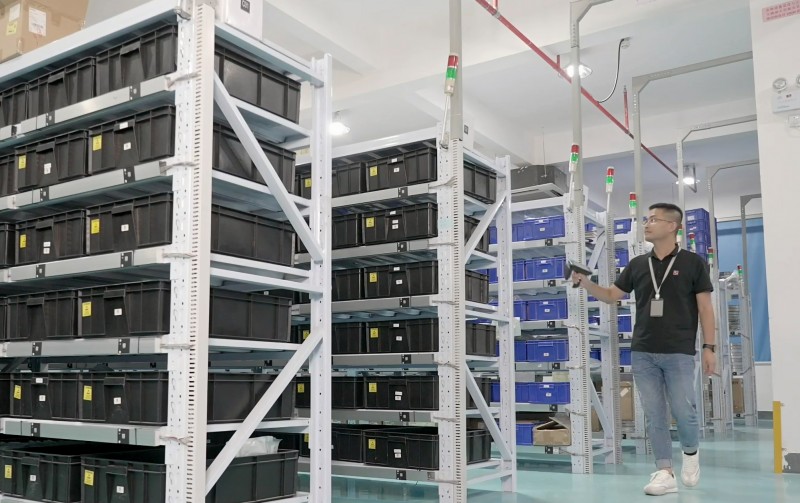
Using warehouse scanning equipment, barcode systems significantly enhance inventory counting efficiency and accuracy, helping businesses manage inventory more effectively and optimize stock levels.
4.Cost Reduction
A warehouse barcoding system optimizes inventory management processes, reducing the workload of manual data entry and management, and thus, significantly cuts down on operational costs.
5.Scalability and Flexibility
As business grows, barcode systems can adapt flexibly, easily accommodating increased inventory and new storage locations, maintaining efficient operations.
6.Enhanced Business Relations
Warehouse barcode scanning systems meet the standard requirements of various stakeholders like suppliers or retailers, fostering smoother transactions and stronger business relationships.
Steps to Implementing a Warehouse Barcode System
1.Assessing Warehouse Barcode Needs
The first step is a thorough assessment of your warehouse’s needs. This involves cataloging all stock keeping units (SKUs) and their variants.
Create a detailed inventory list, cataloging all existing and potential SKUs and variants in the warehouse. These SKUs typically include:
●Various parameters: color, length, material, size, weight, etc.
●Purchase cost: the buying price of materials or products.
●Supplier information: supplier codes or names.
●Minimum order quantity requirements.
For finished products, packaging dimensions and delivery times can also be recorded. Each product or material must correspond to a unique barcode and storage location code. With warehouse barcode scanners and industrial PDAs, swift in-and-out warehouse operations are achieved.
2.Choosing the Right Barcode Type
Decide between 1D and 2D barcodes. One-dimensional barcodes are prevalent in retail, while two-dimensional barcodes like QR codes are more information-dense and suitable for diverse industries.
One-dimensional barcodes, usually composed of vertical lines of varying widths, are used to encode data. They can be purely numeric or alphanumeric and are valued for their simplicity and readability, suitable for most standard 1D barcode scanners. They are widely used in retail and logistics, such as supermarket product labels and logistics package tracking.
Two-dimensional barcodes, like the well-known QR code, consist of squares or rectangles made of short lines or dots. They can store more information and are not limited by space, commonly used in automotive manufacturing and the pharmaceutical industry.
When designing barcode labels, choose the appropriate barcode symbology based on industry standards and specific needs. Here are some common barcode symbologies and their applications:
●UPC codes: widely used one-dimensional barcodes consisting of 12 digits, providing quick product identification and pricing information. Mainly used in the retail industry, especially on product labels in supermarkets and department stores.
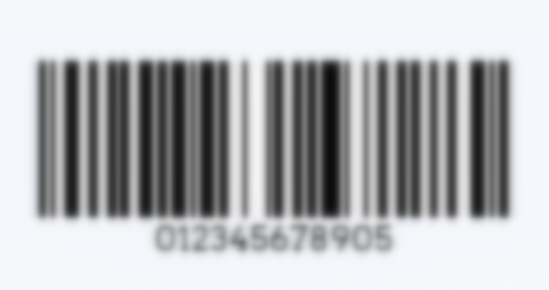
●Code 39: encodes letters and numbers, simple in structure, high in recognition. Used in manufacturing, healthcare, and logistics, especially where marking a small amount of data is needed.
●CODE 128: a typical high-density one-dimensional barcode. It encodes all 128 ASCII characters, flexible in coding with a large information capacity. Suitable for transportation and logistics industries that encode a large amount of data, like parcel tracking.
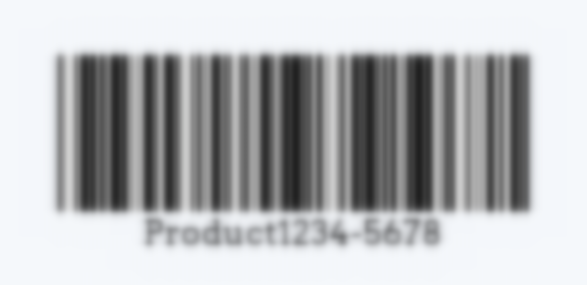
●Plessey code: combines letters and numbers, mainly used to encode numbers and letters from A to F. Common in European retail groceries and libraries and gaining popularity in the U.S.
●QR code: an efficient two-dimensional barcode that encodes thousands of characters, including text, numbers, and binary data. Used in manufacturing for product tracking and management, particularly in areas requiring detailed product information and history, like machinery, electronics, and medical devices.

Once the barcode type is decided, consider details like format, size, and material of the barcode label. Various types of warehouse barcodes are available, including storage bin labels, rack location labels and pallet labels, each with different material options based on their use. For example, shelf labels often use durable PET material, while pallet labels are made of wear-resistant, waterproof synthetic paper.
3.Selecting a Compatible Warehouse Management System (WMS)
Choose a WMS that aligns with your warehouse barcode system needs. This system should manage a variety of warehouse functions such as storage, dispatch, inventory, and should be integrated seamlessly with your existing ERP systems.
When choosing a warehouse barcode system, consider the following factors:
●Business requirements: Define specific needs, including warehouse size, types of goods handled, and business processes.
●System functions: Assess if the system provides necessary features, such as inventory management, order processing, and report generation.
●Usability: Opt for user-friendly systems with an intuitive interface to improve staff efficiency.
●Integration capability: Ensure the system is compatible with existing ERP systems or other business systems.
●Scalability: Consider if the system supports future business expansion, such as adding new warehouses or handling more orders.
After selecting the warehouse software, consider purchasing barcode scanners and handheld PDAs, like wireless barcode scanners or RFID handheld terminals, ensuring compatibility with your software and supporting the chosen barcode types.
4.Barcode Printing
As barcode systems need to integrate with various ERP systems, barcode printers must meet specific requirements, including data interface compatibility and the ability to print specific barcode formats. Therefore, businesses often need customized barcode printers.
iDPRT offers professional barcode printer customization services, supported by an extensive R&D team. This team excels in adapting printer hardware, tailoring software interfaces, and enhancing the overall user experience to meet the specific needs of your business.
For inventory products, directly print barcodes on products and batch print labels for shelving units, material bins, and pallets. To manage material and product barcodes effectively in various warehouse operations, consider the following:
●Raw Material Warehousing: Utilize the iDPRT iT4X 4-inch desktop barcode printer for rapid generation of diverse barcode labels. This thermal transfer printer, which connects seamlessly to computers via USB or Ethernet, boasts a printing speed of up to 8 inches per second, making it ideal for handling high-volume storage tasks. After printing, apply these labels to your packaging or pallets, and employ iDPRT’s high-performance handheld scanners for quick and accurate storage processing.
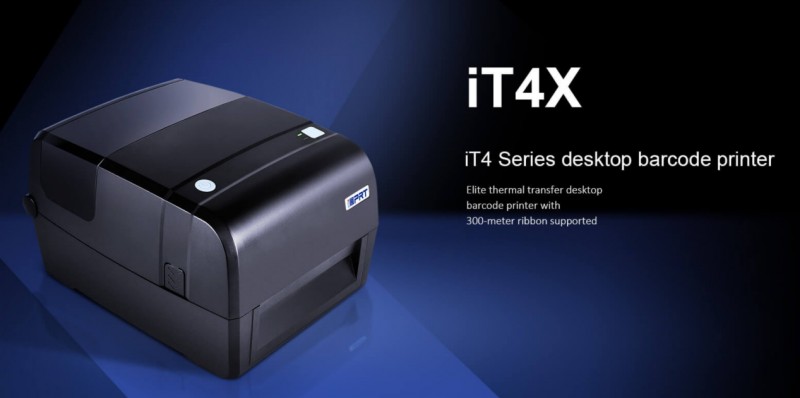
●Semi-finished Product Warehousing: As the production line winds down, operators employ the iDPRT iT4X barcode printer to produce both 1D and 2D barcode labels on a variety of label types including black mark paper, continuous paper, and die-cut labels. These barcodes are clear and easy to read. Upon scanning these barcodes, semi-finished product information will be updated in the WMS system in real-time, achieving seamless production and storage integration.
●Finished Product Warehousing: During this process, operators first scan the production order to ensure barcode label information matches the finished product. Then, use the iDPRT iT4X for printing labels on products and packaging boxes. The iT4X supports various label materials, including coated paper, synthetic paper, and silver paper. This thermal transfer printer is stable, durable, low in malfunction, and easy to maintain, highly suitable for fast-paced warehouse barcode printing needs.
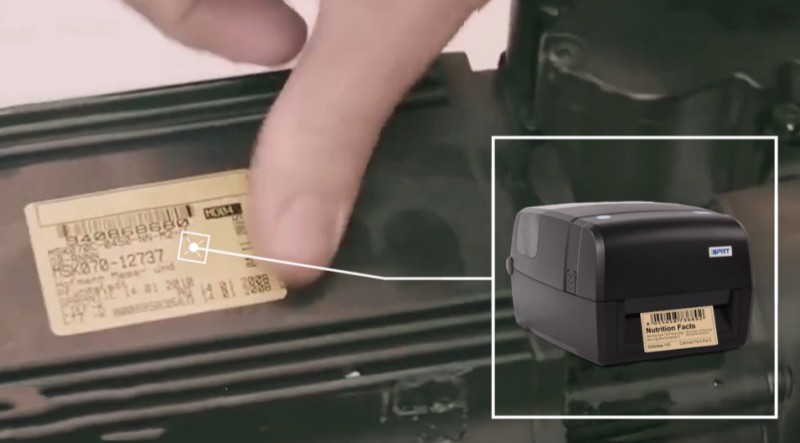
Today, integrating a Warehouse Barcode System is a strategic move towards smarter inventory management and operational excellence. For businesses planning to implement a barcode system in their warehouse, selecting high-quality, compatible hardware, such as barcode scanners and printers, is essential to fully leverage this technology.
Looking for top-notch barcode printers or need expert advice on barcode solutions tailored for warehousing? Feel free to concact us for guidance and insights.







